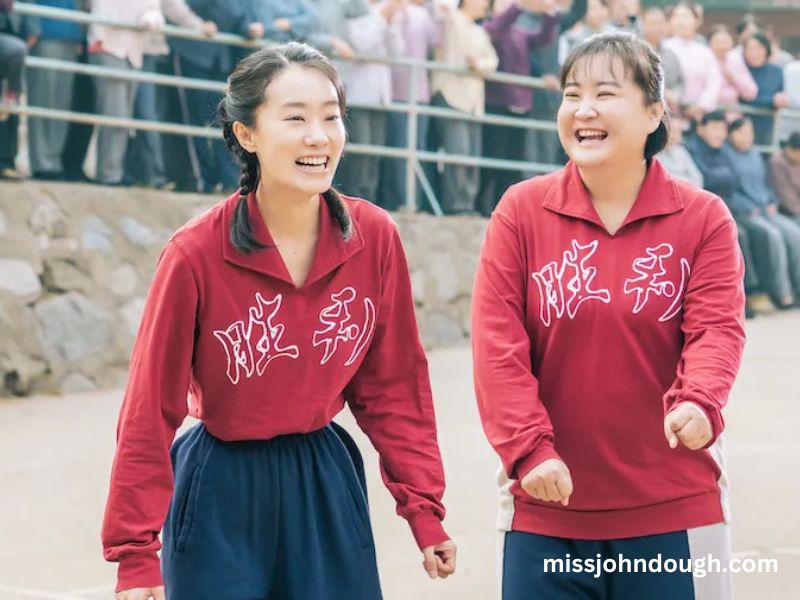The phrase “Yin du Shen Miao” has recently gained attention in various online communities, particularly in New Jersey. While its exact meaning remains somewhat ambiguous, it has sparked discussions and curiosity among residents and visitors alike. This article delves into the origins, interpretations, and cultural significance of “Yin du Shen Miao” in New Jersey, aiming to provide clarity and insight into this intriguing phenomenon.
Understanding ‘Yin du Shen Miao’
“Yin du Shen Miao” is a term that has surfaced in various online forums and social media platforms. Its literal translation from Chinese is “Silver Capital Temple,” but its contextual meaning is not widely recognized. The term has been associated with various discussions, including those related to Shen Yun Performing Arts, a performing arts company known for its traditional Chinese dance and music. However, the direct connection between “Yin du Shen Miao” and Shen Yun remains unclear.
What is “Yin du Shen Miao”?
“Yin du Shen Miao,” when translated from Mandarin Chinese, means “Silver Capital Temple.” However, the term does not directly correspond to any well-known historical or religious landmark. While the literal translation suggests a place of worship or temple, the true meaning and significance of “Yin du Shen Miao” remain somewhat ambiguous. Online discussions surrounding the term have speculated on its connection to different cultural practices, but no definitive explanation has been offered.
Connection to Shen Yun Performing Arts
One of the most common associations with “Yin du Shen Miao” is its connection to Shen Yun Performing Arts. Shen Yun is a world-renowned performing arts company known for its vibrant displays of traditional Chinese dance, music, and culture. The troupe has performances scheduled in New Jersey at venues like the New Jersey Performing Arts Center (NJPAC) in Newark, drawing audiences interested in Chinese traditions.
However, there is no official confirmation linking the term “Yin du Shen Miao” directly with Shen Yun or its performances. The connections seem to be purely speculative, with some individuals associating the term with the cultural aspect of the Shen Yun performances, which often showcase traditional Chinese religious and spiritual themes.
Exploring Cultural Influence in New Jersey
New Jersey is a diverse state with a vibrant cultural landscape, home to a large and growing Chinese community. With this diversity comes a rich tapestry of traditions, customs, and new terms that may be unfamiliar to the broader public. In New Jersey, discussions about “Yin du Shen Miao” may be the result of cultural exchanges and influence from the Chinese diaspora, which often introduces new phrases that evolve within these communities.
Many residents of New Jersey, particularly those in the Chinese-speaking community, may be using the term “Yin du Shen Miao” to refer to spiritual practices or cultural events. These discussions often spill over into online forums, where they gain traction among interested individuals. Still, without clear documentation or confirmation, much of the term’s meaning remains speculative.
The Mystery Behind “Yin du Shen Miao” in Online Communities
Social media and online forums have become the breeding ground for a wide array of discussions on phrases like “Yin du Shen Miao.” As the term gained attention, people have begun speculating on its meaning, with some suggesting that it could be tied to a specific place or event, while others believe it may refer to a spiritual or philosophical concept.
The online discourse surrounding “Yin du Shen Miao” points to its growing popularity as a term that may have a deeper cultural meaning, but one that hasn’t yet fully emerged in mainstream understanding. The lack of official sources or detailed explanations only adds to the intrigue surrounding this term, creating a sense of mystery that fuels continued interest and conversation.
What Does “Yin du Shen Miao” Represent for Local Communities?
The Chinese community in New Jersey, particularly in cities like Edison, Jersey City, and Fort Lee, has seen rapid growth over the years. The influx of Chinese immigrants and the establishment of cultural centers has fostered a unique environment where new expressions, terms, and cultural references emerge.
“Yin du Shen Miao” could be part of this evolving language and culture. While the phrase itself remains somewhat obscure, it is indicative of the continuous blending of Eastern traditions with Western influences. Many local cultural festivals, performances, and community gatherings could be using terms like “Yin du Shen Miao” to express cultural pride or convey meaning to members of their community.
It is possible that the term is tied to a specific event or gathering that holds significance for New Jersey’s Chinese population. However, without clear documentation, it is difficult to say for certain what “Yin du Shen Miao” represents for these communities.
Why Is “Yin du Shen Miao” Important?
The mystery behind “Yin du Shen Miao” serves as a reflection of how language, culture, and traditions continue to evolve within diverse communities. In places like New Jersey, where immigrant populations thrive, new cultural expressions often take root and spread through social media and word of mouth.
By engaging with terms like “Yin du Shen Miao,” people are participating in an ongoing conversation about identity, spirituality, and the intersection of Eastern and Western cultures. The term itself may be just the tip of the iceberg, representing a much larger movement or cultural shift within New Jersey’s diverse communities.
Conclusion
The term “Yin du Shen Miao” remains a fascinating and mysterious topic in New Jersey, one that has captured the attention of both local and online communities. Although its precise meaning is still unclear, the phrase serves as a reminder of the dynamic cultural exchange that shapes the state’s diverse population. Whether it is linked to Shen Yun, spiritual practices, or cultural events, the significance of “Yin du Shen Miao” is still unfolding. As the term continues to spark curiosity and discussion, it exemplifies how new cultural expressions emerge and grow in a globalized world.


